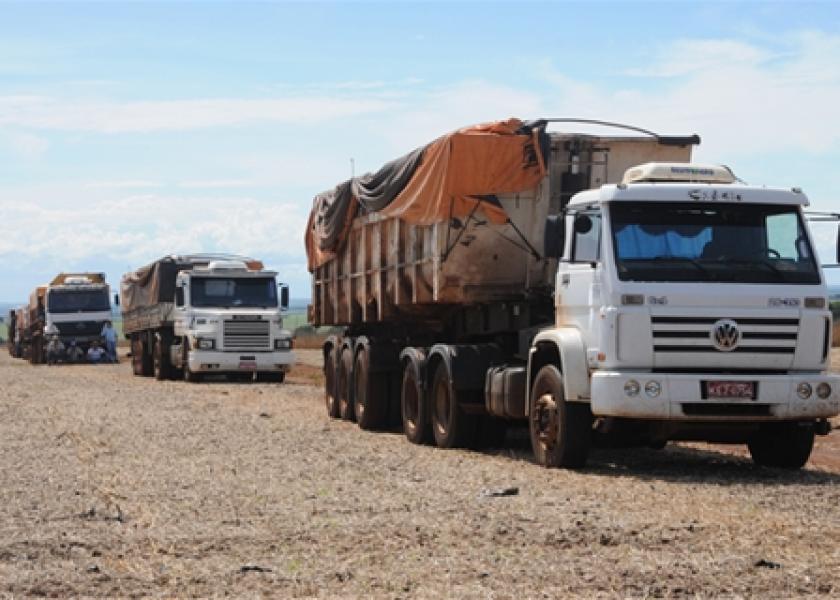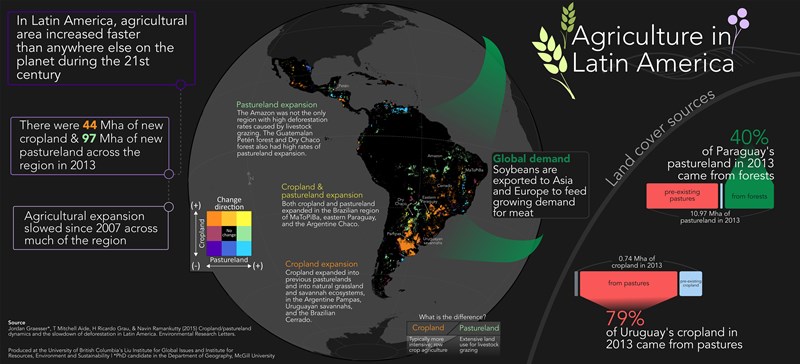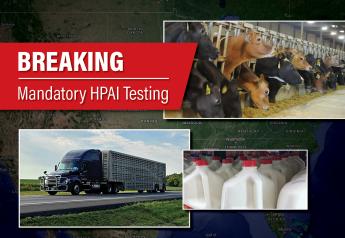As Latin America Grows, Agricultural Land Expansion Slows

Given the volume of corn and soybeans coming out of Brazil and its neighbors, it seems hard to believe that anything involving agriculture might be slowing down.
But a new study of satellite imagery from Latin America suggests the rate of that growth may be downshifting.
“Nearly every agricultural region across Latin America slowed down in expansion from 2007 to 2013, compared to the previous six years,” said Jordan Graesser, the lead author of the study, which was recently published in Environmental Research Letters.
Of course, slowing growth still counts as growth.
( To view a larger version of the graphic, please click on the image.)
“Since the 1960s, Latin American farmers expanded agriculture faster than anywhere else on the planet,” according to the study. “….The rapid agricultural expansion in Latin America indicates the region is realizing its vast land potential, with unprecedented growth driven by global food demand for human and livestock consumption, currency devaluation, policy reform, technological and infrastructure improvements , land availability, and the growing biofuels industry.”
The study examined both pastureland used for grazing and cropland used for soybeans, cotton, corn, and other row crops. Overall, Latin America added 96.9 million hectares of pastureland and 44.27 million hectares of cropland between 2001 and 2013.
Where did this expansion occur? Generally, the greatest agricultural land growth happened in Argentina, Brazil, Paraguay and Uruguay. Some of the new pastures and fields had previously been forests, but not all. In Uruguay, 79% of new cropland came from pastureland, “which was the largest proportion of pastureland to cropland conversion in Latin America,” according to the study.
Much of that land has gone into soybeans. “Beef prices have risen substantially since 2001 and directly impacted the expansion of grazing lands in Colombia, Brazil, Bolivia and Paraguay. Consequently, land devoted to soy has risen in order to meet livestock feed demands,” according to the study.
What will happen in the years to come? It depends, as so many things in agriculture do, on the markets. "Agriculture in Latin America is tied to global commodity prices," says Graesser. "So if the global economy continues to recover, and if crop prices increase, there's likely going to be more expansion.”








